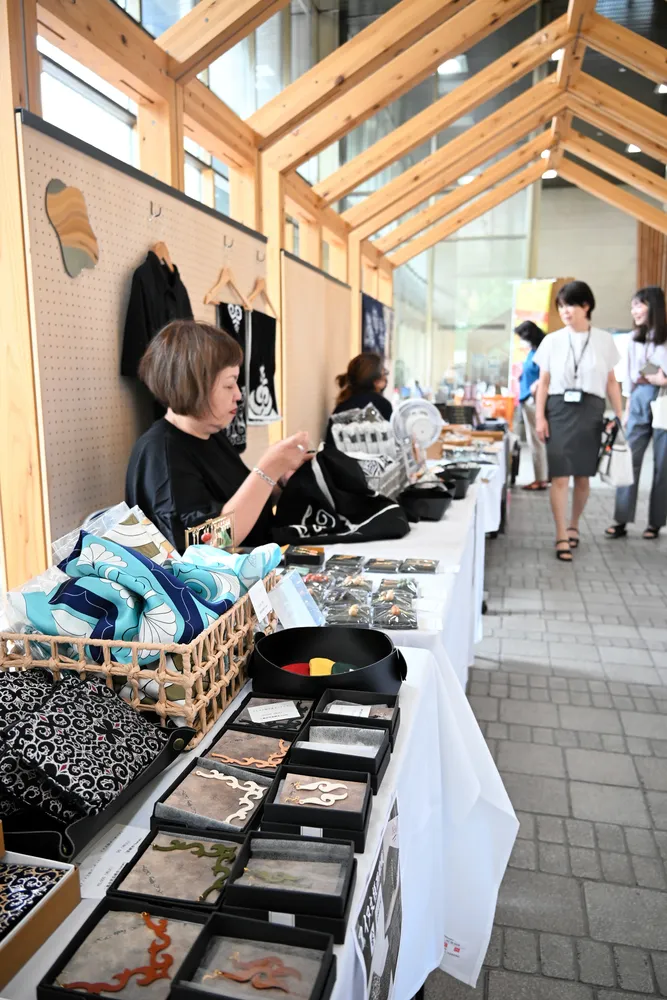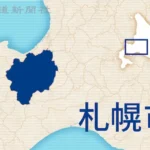An exhibition of Ainu crafts by the “Nibutani Folk Art Association,” a group of artisans from Biratori Town in Hokkaido, began on the 10th on the first floor of the main building of the Hokkaido Government Office in Chuo Ward, Sapporo.
Ainu crafts
Ainu crafts are traditional handmade items created by the Ainu, the indigenous people of Japan’s northern regions, such as Hokkaido. These crafts include intricate woodcarvings, embroidered textiles (like attush robes), and woven baskets, often featuring nature-inspired motifs such as animals and spiritual symbols. Historically, Ainu craftsmanship reflects their deep connection to the natural world and cultural identity, though many traditions declined due to assimilation policies before recent revitalization efforts.
Nibutani Folk Art Association
The Nibutani Folk Art Association is a cultural organization in Hokkaido, Japan, dedicated to preserving and promoting Ainu traditions, particularly those of the Nibutani region, a center of Ainu culture. It showcases traditional Ainu crafts, such as woodcarving and embroidery, and educates visitors about the history and heritage of the indigenous Ainu people. The association plays a vital role in revitalizing Ainu cultural practices and fostering awareness of their unique identity.
Biratori Town
Biratori Town is a small town in Hokkaido, Japan, known for its rich Ainu culture and history. It is home to the “Nibutani Ainu Culture Museum,” which showcases traditional Ainu artifacts and promotes the preservation of their indigenous heritage. The town is also famous for its scenic landscapes, including the Saru River, and has played a key role in efforts to revitalize Ainu traditions and crafts.
Hokkaido
Hokkaido is Japan’s northernmost and second-largest island, known for its stunning natural landscapes, including national parks, hot springs, and ski resorts. Historically inhabited by the indigenous Ainu people, Hokkaido was officially developed by the Japanese government in the late 19th century during the Meiji era to strengthen Japan’s northern borders and promote settlement. Today, it is a popular destination for outdoor activities, wildlife, and unique cultural experiences blending Ainu traditions with modern Japanese influences.
Hokkaido Government Office
The Hokkaido Government Office, also known as the “Red Brick Office,” is a historic building in Sapporo, completed in 1888 as the seat of Hokkaido’s regional administration. Designed in the American Neo-Baroque style, it symbolizes Hokkaido’s development during the Meiji era. Today, it serves as a museum and tourist attraction, showcasing the island’s history and governance.
Chuo Ward
Chuo Ward (中央区, Chūō-ku) is one of the 23 special wards of Tokyo, Japan, known as a bustling commercial and financial hub. Historically, it was part of the old city of Edo and includes famous districts like Ginza (a high-end shopping area) and Tsukiji (formerly home to the iconic Tsukiji Fish Market). The ward also features cultural landmarks such as the Kabukiza Theatre and Nihonbashi Bridge, reflecting its blend of modernity and tradition.
Sapporo
Sapporo is the capital city of Hokkaido, Japan’s northernmost prefecture, founded in 1868 during the Meiji Restoration as a planned modern city. It is famous for its annual Sapporo Snow Festival, which began in 1950 and showcases massive ice and snow sculptures. The city is also known for its beer, Sapporo Brewery, established in 1876, making it one of Japan’s oldest beer brands.






